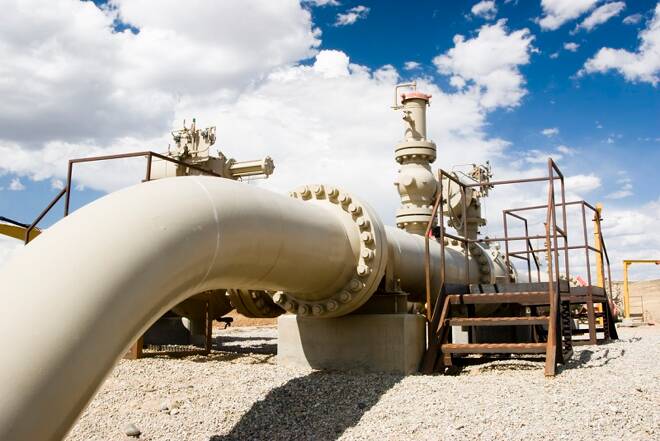Advertisement
Advertisement
Natural Gas Price Prediction – Prices Bounce but are Subdued by Rising Production
By:
The weather is expected to weigh on prices
Natural gas prices moved higher on Tuesday but the bounce was relatively muted. Prices rose 0.43%, as colder than normal weather is forecast to cover most of the United States for the next 6-10 days. The weather over an 8-14 day period is expected to become milder according to the National Oceanic Atmospheric Administration. Despite inventory levels below the 5-year average, and near the bottom end of the 5-year average range, strong natural gas production is weighing on prices.
Technical Analysis
Natural gas prices moved lower making a lower low and a lower high which is a sign of a downtrend. Prices appear to have bounced at support near the 20-day moving average at 2.76. Short term resistance is seen near the 10-day moving average at 2.834. The next level of target resistance is seen near the February highs at 2.91. Momentum is neutral as the MACD (moving average convergence divergence) histogram prints in the black with a declining trajectory which reflects decelerating positive momentum. The fast stochastic has also stalled and steadied in the middle of the neutral range near 53. Recall that levels on the fast stochastic above 80 are considered overbought while levels below 20 are considered oversold.
Inventories Are Expected to Grow
Natural gas inventories for the 10th week of the year are expected to show a 161 Bcf draw in stockpiles. This comes following last weeks draw of 149 Bcf which came in approximately 8 Bcf more of a decline than expected. The Energy Information Administration in its latest annual forecast shows a noticeable increase in the volume of production of dry natural gas coming out of the east coast of the United States. The EIA expects natural gas production in the eastern region to be driven by the marcellus and Utica shale plans. Natural gas production is expected to reach 120 billion cubic feet per day in 2050 compared to 75 Bcf per day in 2017. According to the EIA dry shale natural gas production in the East coast of the United States makes up more than 50% of ther growth.
About the Author
David Beckerauthor
David Becker focuses his attention on various consulting and portfolio management activities at Fortuity LLC, where he currently provides oversight for a multimillion-dollar portfolio consisting of commodities, debt, equities, real estate, and more.
Advertisement
